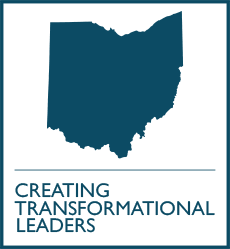Themed Guide
Developed as a teaching tool, the film is designed to trigger discussion of core issues related to family caregiving. It focuses on home-based elder care. The story is told by four families – the Gippins, the Liles, the Scotts and the Haskinses – who open their hearts and share their experiences.
Family Circumstances
- What motivates families to take on caregiving responsibilities?
- What circumstances prevent families from taking on caregiving responsibilities?
- Barbara Haskins remarks that she never expected to become a caregiver, maybe for her parents, but never her spouse. Why do you think we, as a society, are so unprepared to be family caregivers?
- What kind of personal supports were necessary for the caregivers in the film.
Family Experience
- How can caregiving negatively affect family dynamics?
- What do you think it is like being a family member who is long distance?
Challenges
- Identify the major physical, emotional, social and financial challenges faced by these families.
- What did Josh Gippin mean when he said, “All caregivers have to struggle with the question of how much are they able to give and what’s the point where it is too much?” How can the healthcare provider use this knowledge to prepare caregivers for what lies ahead?
- What are some of the challenges unique to caring for someone with Alzheimer’s disease such as Bill Lile?
- What did Margaret Scott mean when she said that one of the greatest challenges was that “no one got it”?
- Financial hardship meant that Mr. Haskins could not stay in a nursing facility. Money was a deciding factor for caring for him in the home. How does such a reality inform your understanding of the financial side of providing long-term care and how invaluable caregivers can be?
Rewards
- Discuss Robert Lile’s statement “in the midst of very difficult times, there can still be laughter…there can still be joy.” How might the health care professional use this insight as a means of connecting with caregivers?
- What did Barbara Haskins say pleased her the most?
- What impact did family caregiving have on the Scott girls?
Role of Health Care Providers
- What did you learn from the families that you will incorporate into your future health care practice?
- What advice did the families share with you?
- “Walk the walk with them instead of telling them how to walk it.” What does this mean to you?
- “Listen.” Why do you think doctors and other health care professionals do not listen to caregivers?
- What services are available in the community to support family caregivers?
- Barbara Haskins says her doctor makes home visits. In what ways is this helpful to her doctor?
- Barbara Haskins draws a distinction between the health care professional and the caregiver. For her, caregivers understand the particular needs of a patient better than the professional because the caregiver is closer to the patient. How do you respond to this statement? Is the distinction useful? What skills do you think health care professionals need to have to support patients and families at end of life?
End of Life
- Doris Lile remarked that she wasn’t prepared for what the future holds. What do you think she meant by that?
- Discuss Margaret Scott’s statement “she taught me there is a time to say goodbye.”
- What services are offered by hospice?
General
- Have you had any caregiving experiences within your family? How did they relate to the families in the film?
- Can you put yourself in a caregiving role? What would that be like for you? For your family?
- What does it mean – there is no roadmap to caregiving?
- What is the most important message you took away from the film?
Building Caregiver Partnerships
This site contains a free compendium of educational tools and resources on issues of family caregiving for health professions faculty, providers and students.
Co-sponsored with Summa Health and funded by the Arthur Vining Davis Foundations.


